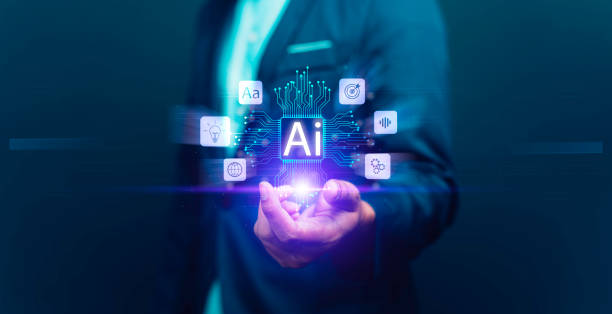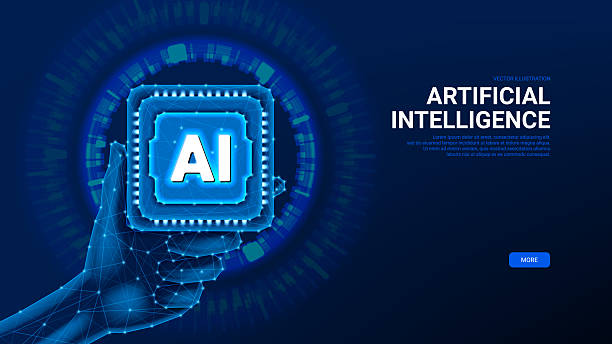What is an AI robot and how does it work?
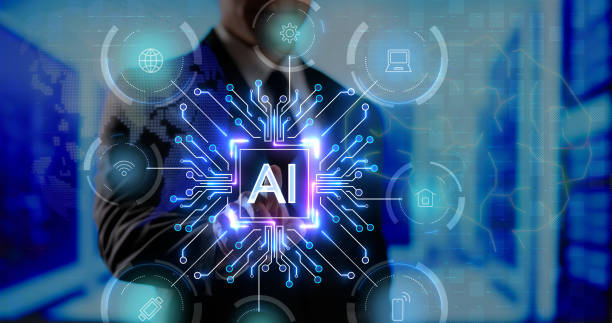
What is an AI robot and how does it work?
An AI robot is a combination of Artificial Intelligence and robotics.
Simply put, it’s a physical or virtual robot that, using AI algorithms, can perform tasks that usually require human intelligence.
These tasks include learning, problem-solving, decision-making, pattern recognition, and natural language understanding.
An AI robot uses sensors to collect information from its surrounding environment.
This information is sent to the robot’s central processor, where AI algorithms analyze the data and make decisions based on it.
Then, the robot takes the necessary actions using actuators (such as motors, arms, or displays).
For example, an AI robot in a factory might use sensors to detect defects in products and then use a robotic arm to remove the defective product from the production line.
Another example could be a chatbot that uses natural language processing to interact with users and answer their questions.
By continuously learning from new data and experiences, an AI robot can improve its performance and perform more complex tasks.
In fact, an AI robot tries to simulate human cognitive capabilities in a machine and, in this way, help improve efficiency, accuracy, and speed of performing tasks.
These robots have extensive applications in various industries, including manufacturing, healthcare, education, and entertainment.
An advanced AI robot can even recognize and respond to human emotions, making human-machine interaction more natural and effective.
Did you know that your website is your customers’ first impression of your company? Multiply your business’s credibility with a powerful corporate website from Rasaweb!
✅ Exclusive and eye-catching design tailored to your brand
✅ Improved user experience and increased customer acquisition
⚡ Get free advice!
Types of AI robots and their applications

Types of AI robots and their applications
AI robots can be categorized based on their application type, design, and level of intelligence.
In terms of application, there are industrial robots for automating production processes, service robots for performing household and office tasks, medical robots for assisting with surgery and patient care, and military robots for performing dangerous operations.
In terms of design, robots can be in the form of robotic arms, self-driving vehicles, humanoid robots (androids), or soft robots.
Humanoid robots try to mimic human appearance and movements and are usually designed for interacting with humans in public environments.
Soft robots are made of flexible materials and are suitable for performing delicate and complex tasks in unpredictable environments.
Based on the level of intelligence, robots can range from simple robots with limited programming to intelligent robots with deep learning capabilities.
An advanced AI robot can make decisions independently, adapt to environmental changes, and learn from its past experiences.
These robots use complex algorithms such as artificial neural networks and reinforcement learning.
The applications of AI robots are very broad and are expanding.
In industry, robots can perform repetitive and dangerous tasks with high accuracy and speed.
In medicine, robots can assist surgeons in performing complex operations and help patients with rehabilitation.
In services, robots can act as guides, advisors, or personal assistants.
In agriculture, robots can help with planting, harvesting, and managing crops.
AI robots are changing the way we live and work, and they are expected to play an increasingly important role in society in the future.
Advantages and disadvantages of using AI robots
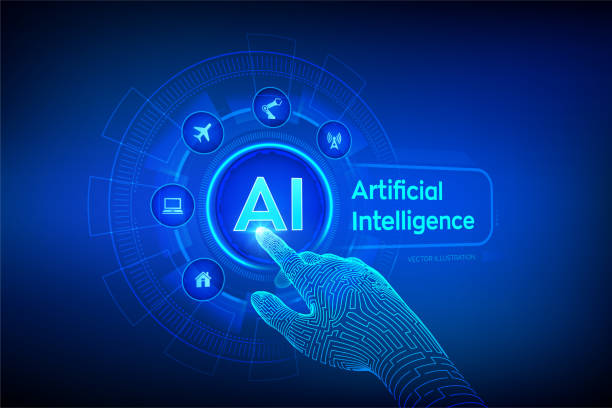
Advantages and disadvantages of using AI robots
There are many advantages to using AI robots.
Increased productivity and reduced costs are among the most important advantages.
An AI robot can work continuously and with high accuracy, which leads to increased production and reduced errors.
Also, robots can perform dangerous and repetitive tasks, which reduces risks and improves working conditions for humans.
Another advantage is improved service quality.
Robots can provide consistent and uniform services, which increases customer satisfaction.
In addition, robots can help collect and analyze data, which helps organizations make better decisions and optimize processes.
However, there are also disadvantages to using AI robots.
One of the most important disadvantages is job loss.
With the automation of processes, many jobs that were performed by humans are being replaced by robots, which can lead to increased unemployment and social inequality.
Also, the high cost of implementing and maintaining robots can be a barrier for some organizations.
In addition, there are ethical issues related to the use of AI robots.
For example, the responsibility for robot decisions in the event of an error or injury is unclear.
There are also concerns about privacy and data security.
An AI robot, if hacked or misused, can create serious risks.
Therefore, it is necessary to pay attention to the advantages and disadvantages when using AI robots and take the necessary measures to reduce risks and optimize the use of this technology.
To better understand this issue, a table of advantages and disadvantages is provided:
| Advantages | Disadvantages |
|---|---|
| Increased productivity | Job loss |
| Reduced costs | High implementation cost |
| Improved service quality | Ethical issues |
| Performing dangerous tasks | Security concerns |
Challenges in implementing AI robots

Challenges in implementing AI robots
Implementing AI robots comes with numerous challenges.
One of the most important challenges is the shortage of skilled specialists and engineers in the field of AI and robotics.
Designing, developing, and maintaining AI robots requires a high level of knowledge and expertise that is currently lacking in many countries.
Another challenge is the high cost of research and development and implementation of robots.
An advanced AI robot requires significant investment in hardware, software, and human resource training.
Also, collecting and preparing training data for robots is a major challenge.
Robots need a lot of data to learn and improve their performance, which must be collected and labeled accurately.
In addition, security and privacy issues are also serious challenges.
Robots may have access to sensitive data, so appropriate security measures must be taken to prevent unauthorized access and misuse of data.
Another challenge is the legal and ethical issues related to the use of robots.
For example, the responsibility for robot decisions in the event of an error or injury is unclear.
There are also concerns about the impact of robots on the labor market and social inequality.
Therefore, it is necessary to pay attention to these challenges when implementing AI robots and provide appropriate solutions to solve them.
Are you losing potential customers due to an unprofessional website? Rasaweb is your answer! With our specialized corporate website design services:
✅ Enhance the credibility and position of your business
✅ Experience attracting more targeted customers
⚡ Act now to receive free consultation!
The future of AI robots and their impact on human life

The future of AI robots and their impact on human life
The future of AI robots is very bright and promising.
With rapid advances in the fields of AI, robotics, and related technologies, robots are expected to play a much more important role in human life in the future.
AI robots will become more advanced, intelligent, and automated and will be able to perform more complex tasks.
In the future, robots will have a greater presence in various industries, including manufacturing, healthcare, education, transportation, and entertainment.
Robots can help improve the quality of human life, increase productivity, and reduce costs.
For example, medical robots can help with early diagnosis of diseases, performing complex surgeries, and caring for patients.
Educational robots can help provide personalized education and improve the learning process.
Service robots can help with household and office tasks and assist people with disabilities.
Transportation robots can help reduce traffic, air pollution, and traffic accidents.
However, it is necessary to pay attention to the challenges and ethical issues related to the use of robots.
Appropriate laws and regulations need to be put in place to regulate the use of robots and ensure that robots are used for the benefit of humans and society.
AI robots should be designed and developed to be safe, reliable, and responsible.
The role of AI robots in the manufacturing industry
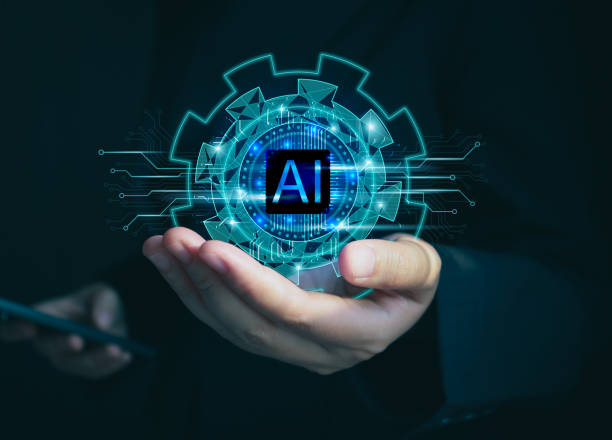
The role of AI robots in the manufacturing industry
AI robots play a very important role in the transformation of the manufacturing industry.
These robots can optimize production processes, increase productivity, reduce costs, and improve product quality.
AI robots in the manufacturing industry can perform various tasks, including assembling parts, inspecting quality, packaging products, and transporting materials.
Using sensors, cameras, and AI algorithms, AI robots can accurately and quickly assemble parts, detect product defects, and package products.
Also, robots can transport materials safely and efficiently in the factory.
One of the main advantages of using AI robots in the manufacturing industry is increased productivity.
Robots can work continuously and without interruption, which leads to increased production and reduced delivery time.
Also, robots can perform repetitive and dangerous tasks, which reduces risks and improves working conditions for humans.
Another advantage is improved product quality.
AI robots can work accurately and uniformly, which leads to reduced errors and improved product quality.
In addition, robots can help collect and analyze data, which helps organizations optimize production processes and improve product quality.
By using AI robots, manufacturing companies can increase their competitiveness, reduce costs, and offer higher quality products to the market.
AI robots in healthcare
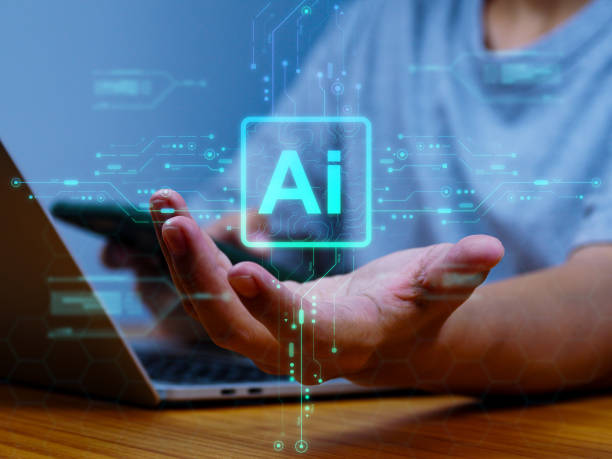
AI robots in healthcare
AI robots are creating a major transformation in healthcare.
These robots can assist doctors, nurses, and other healthcare professionals in diagnosing diseases, performing surgeries, caring for patients, and providing rehabilitation services.
AI robots in healthcare can perform various tasks, including diagnosing diseases, performing surgeries, caring for patients, providing rehabilitation services, and managing medications.
Using machine learning algorithms and image processing, AI robots can analyze medical images and help diagnose diseases more accurately.
Also, robots can assist surgeons in performing complex surgeries with high accuracy and precision.
Robots can help patients with rehabilitation exercises and track their progress.
Robots can assist nurses in caring for patients, such as measuring vital signs and distributing medications.
The use of AI robots in healthcare has many advantages.
Robots can help increase the accuracy and speed of disease diagnosis, leading to faster and more effective treatment.
Also, robots can help reduce the risks of surgery and reduce patient recovery time.
AI robots can help provide healthcare services in remote and underserved areas.
By using AI robots, healthcare systems can become more efficient, cost-effective, and accessible.
The table below illustrates an example of the application of robots in healthcare.
| Application | Description |
|---|---|
| Disease diagnosis | Analyzing medical images using artificial intelligence |
| Performing surgeries | Assisting surgeons in performing complex surgeries with high accuracy |
| Caring for patients | Measuring vital signs and distributing medications |
| Providing rehabilitation services | Assisting patients in performing rehabilitation exercises |
The impact of AI robots on the labor market and employment
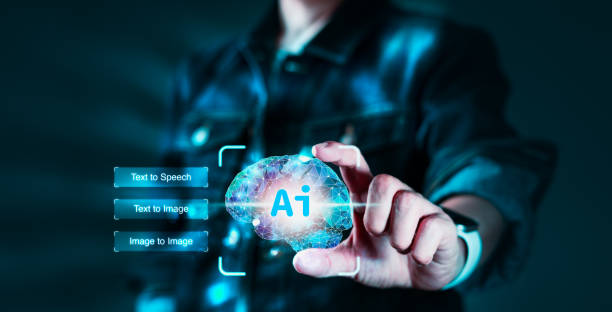
The impact of AI robots on the labor market and employment
The impact of AI robots on the labor market and employment is a complex and controversial issue.
On the one hand, robots can lead to job loss by automating processes and increasing productivity.
On the other hand, robots can help boost the labor market by creating new job opportunities and improving working conditions.
AI robots can perform repetitive and dangerous tasks, which reduces risks and improves working conditions for humans.
Also, robots can help collect and analyze data, which helps organizations make better decisions and optimize processes.
However, automation of processes can lead to job loss in some industries.
In particular, jobs that require low- and medium-level skills are more at risk of being replaced by robots.
On the other hand, robots can create new job opportunities in the fields of designing, developing, maintaining, and repairing robots.
Also, robots can boost economic growth and create new jobs in other industries by increasing productivity and reducing costs.
To mitigate the negative effects of robots on the labor market, governments and organizations need to take action, including investing in education and training, supporting entrepreneurship and innovation, and creating social safety nets.
Also, it is necessary to pay attention to the ethical issues related to the use of robots and ensure that robots are used for the benefit of humans and society.
AI robots should be designed and developed to be safe, reliable, and responsible.
Are you dissatisfied with the low conversion rate of visitors to customers on your online store?
Solve this problem forever with professional online store website design by Rasaweb!
✅ Increase the conversion rate of visitor to customer
✅ Create an excellent user experience and build customer trust
⚡ Get free advice
Ethical and legal issues related to AI robots
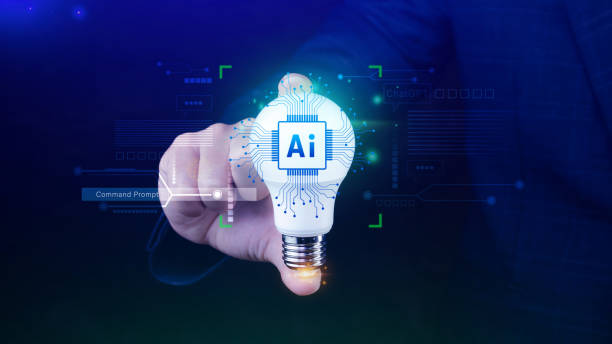
Ethical and legal issues related to AI robots
The use of AI robots comes with numerous ethical and legal issues.
One of the most important issues is the accountability of robots.
If an AI robot causes damage or injury, who is responsible? Is the robot’s manufacturer, the robot’s owner, or the robot itself responsible? These questions require careful examination and the establishment of appropriate laws and regulations.
Another issue is privacy and data security.
AI robots may have access to sensitive data, so appropriate security measures must be taken to prevent unauthorized access and misuse of data.
Also, laws and regulations need to be put in place to regulate the collection, use, and storage of data by robots.
Another issue is the impact of robots on the labor market and social inequality.
Automation of processes can lead to job loss and increased social inequality.
Therefore, governments and organizations need to take action to mitigate the negative effects of robots on the labor market and support vulnerable people.
Another issue is the ethical issues related to the design and use of self-driving robots.
For example, if a self-driving car is involved in an accident, how should it make decisions? Should it save the lives of its passengers or the lives of pedestrians? These questions require careful examination and the establishment of appropriate ethical standards.
AI robots should be designed and developed to be safe, reliable, and in accordance with ethical principles.
Appropriate laws and regulations need to be put in place to regulate the use of robots and ensure that robots are used for the benefit of humans and society.
Key points for selecting and implementing the right AI robot
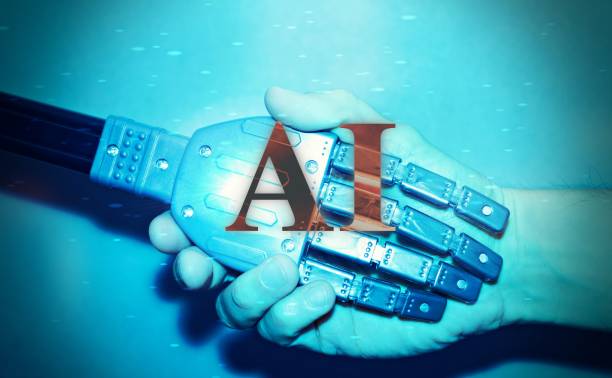
Key points for selecting and implementing the right AI robot
Selecting and implementing the right AI robot requires careful planning and attention to key points.
The first step is to define the organization’s goals and needs.
Before selecting a robot, you need to specify what tasks you want the robot to perform and what problems it should solve.
Also, you need to specify your budget and check what types of robots are within your budget.
The second step is to research and review different options.
You need to review different robots and compare their features, price, and performance.
Also, you should review user and expert reviews and use the experiences of others.
The third step is to choose the right robot.
You should choose a robot that matches your organization’s goals and needs and is within your budget.
Also, you should pay attention to the robot’s capabilities, reliability, and ease of use.
The fourth step is to implement the robot.
You need to properly install and configure the robot and integrate it with existing systems.
Also, you need to provide the necessary training to employees so that they can use the robot correctly.
The fifth step is to evaluate and improve the robot’s performance.
You should regularly evaluate the robot’s performance and, if necessary, change the robot’s settings and configurations.
Also, you should pay attention to user feedback and use it to improve the robot’s performance.
By following these key points, you can select and implement the right AI robot and benefit from its advantages.
AI robot
Frequently Asked Questions
| Row | Question | Answer |
|---|---|---|
| 1 | What is an AI robot? | An AI robot is a machine that is capable of understanding, reasoning, learning, and problem-solving and can perform complex tasks with relative autonomy. |
| 2 | What are the most important applications of AI robots? | The main applications include industrial manufacturing, customer service (chatbots), medicine and surgery, self-driving transportation, space exploration, and military affairs. |
| 3 | What is the main difference between an AI robot and a regular robot? | A regular robot only follows programmed instructions, while an AI robot can learn from data, make decisions, and adapt to new environments. |
| 4 | How do AI robots learn? | They identify patterns and improve their performance through machine learning algorithms (such as deep learning, reinforcement learning) and processing vast amounts of data. |
| 5 | Can AI robots have emotions? | Currently, AI robots do not have real emotions in the human sense. They can mimic or recognize emotions, but they do not understand or experience them. |
| 6 | What are the current limitations of AI robots? | Limitations include the need for a lot of data, the inability to understand abstract concepts, the lack of real creativity, ethical issues, and the challenges of generalizability in new environments. |
| 7 | What is the role of artificial intelligence in the development of humanoid robots? | Artificial intelligence helps humanoid robots walk, maintain their balance, understand their surroundings, interact with humans, and perform complex tasks. |
| 8 | How is the future of AI robots predicted? | It is predicted that AI robots will become smarter, more autonomous, and capable of performing more complex tasks in everyday life and industry, and their interaction with humans will increase. |
| 9 | Can AI robots replace all human jobs? | It is unlikely that all human jobs will be replaced. Robots take over many repetitive and dangerous tasks, but jobs that require creativity, empathy, and moral judgment will remain. |
| 10 | What ethical and social challenges arise with the expansion of AI robots? | Challenges include issues related to privacy, data security, ethical decision-making by robots, impact on employment, and accountability in the event of an error. |
and other services of Rasa Web advertising agency in the field of advertising
Intelligent data analysis: Professional optimization for digital branding using an SEO-focused content strategy.
Intelligent Google Ads: An effective tool to increase site visits with the help of marketing automation.
Intelligent data analysis: A creative platform to improve user interaction with custom programming.
Intelligent brand identity: A creative platform to improve click-through rate by designing an attractive user interface.
Intelligent Reporting: A dedicated service to improve SEO ranking based on user experience customization.
And more than a hundred other services in the field of internet advertising, advertising consulting and organizational solutions
Internet advertising | Advertising strategy | Advertisement Report
Resources
AI Is Everywhere: Why That’s Finally Good News
,NVIDIA AI solutions
,Artificial Intelligence (AI) – IBM
,Artificial Intelligence: News, Articles, Statistics and More | Built In
? To reach the peak of success in the digital world, Rasaweb Afarin is with you with professional services of responsive website design and digital marketing.
📍 Tehran, Mirdamad Street, next to the Central Bank, South Kazeroun Alley, Ramin Alley No. 6

